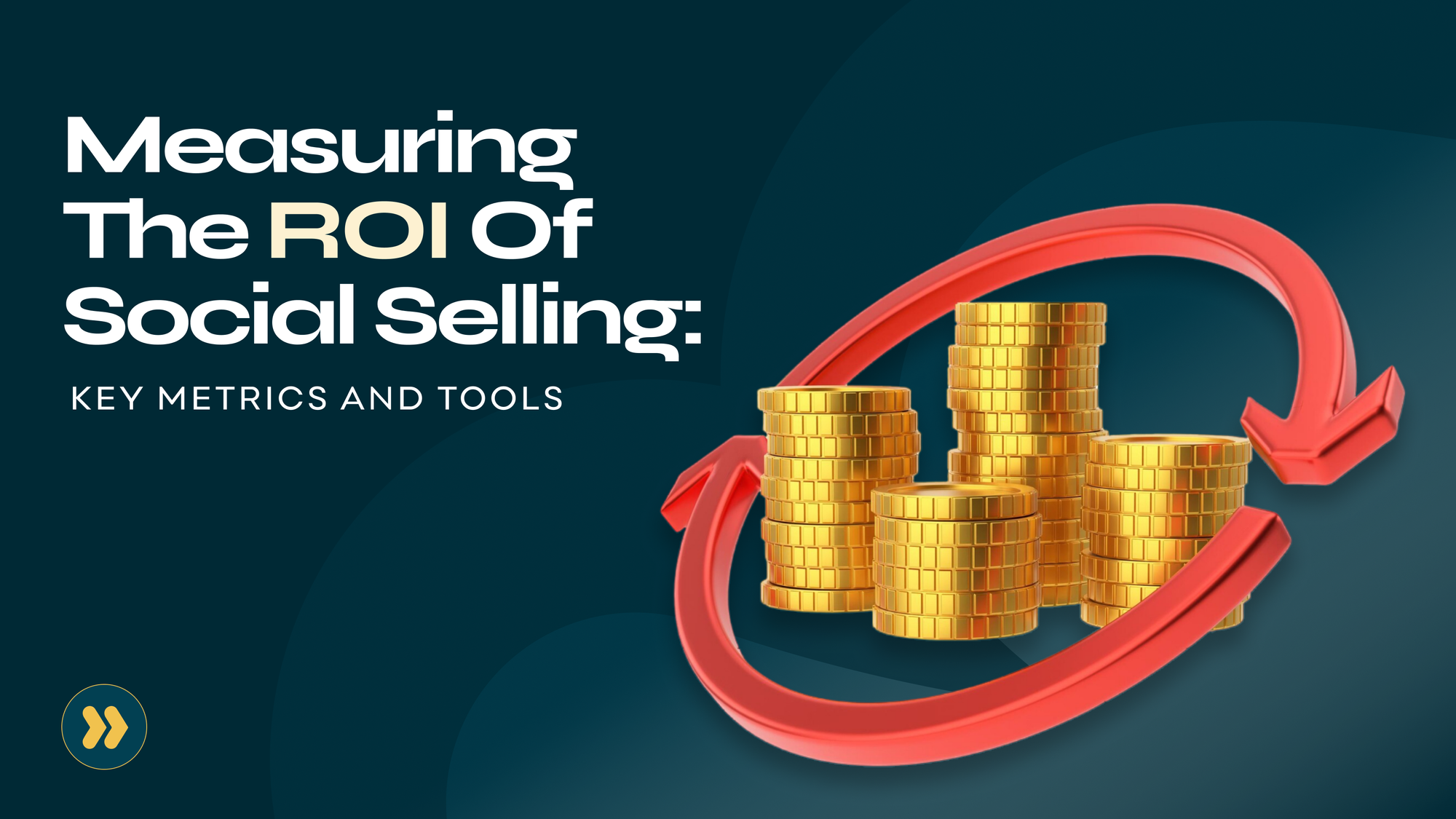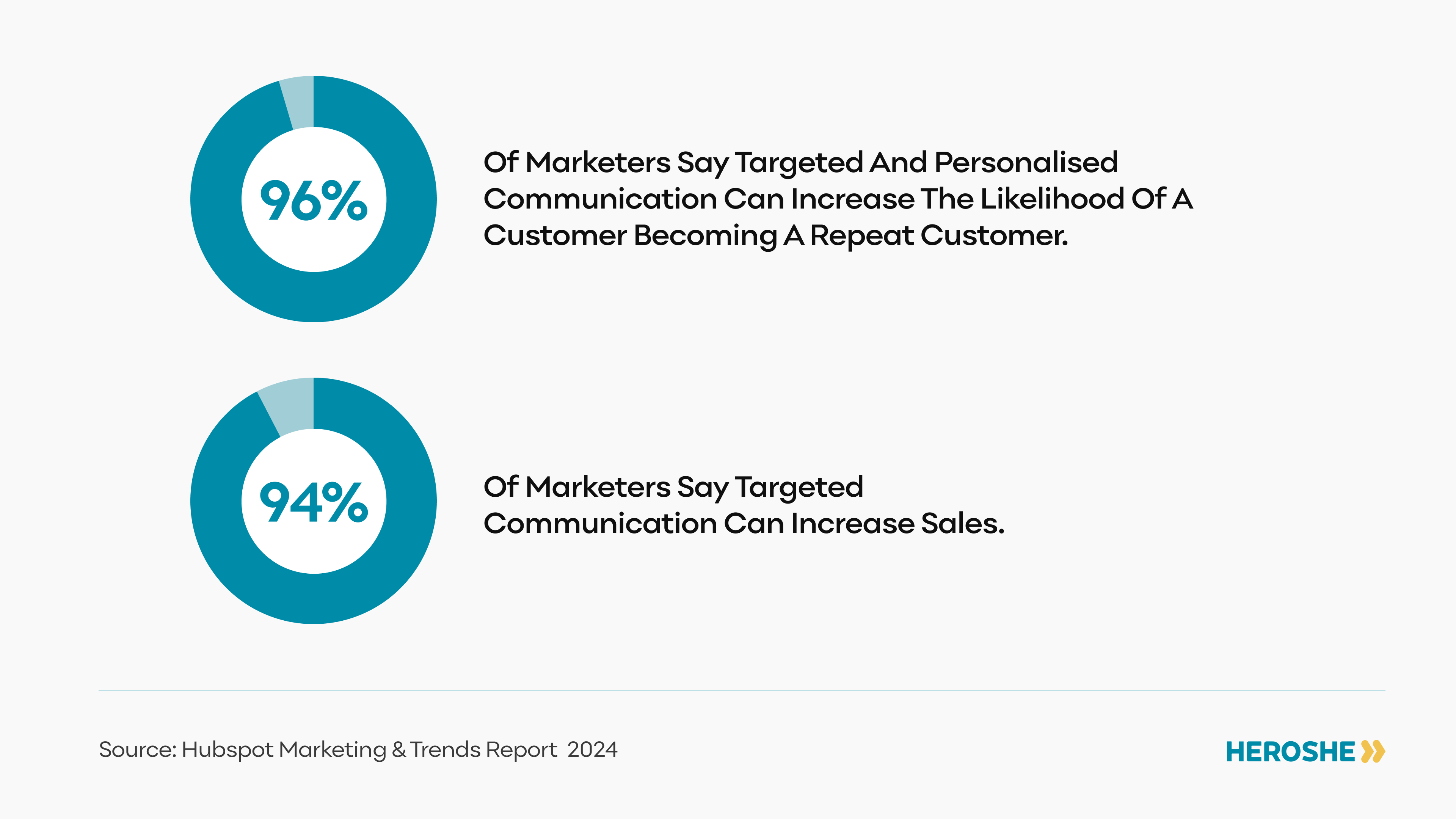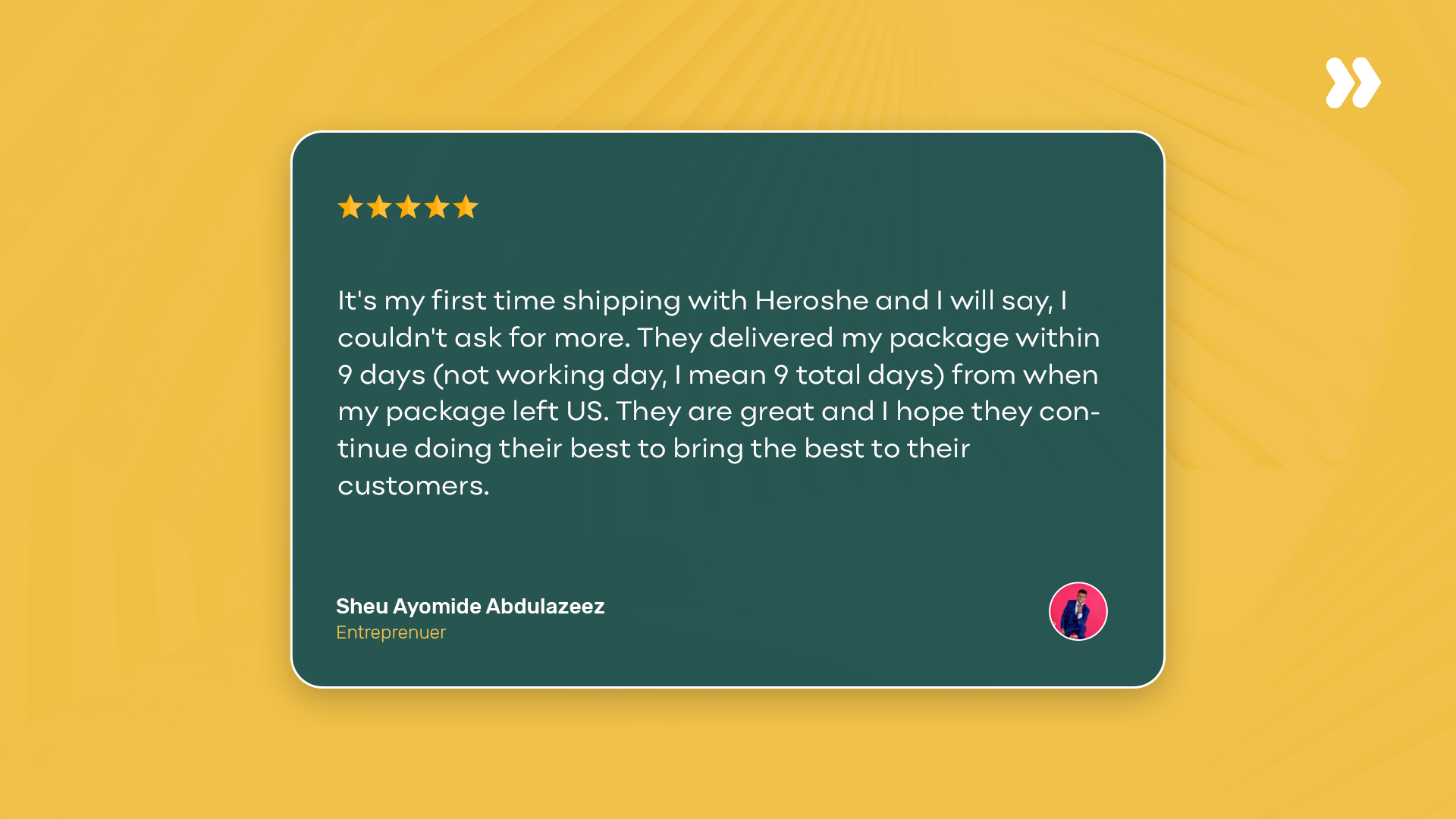Measuring The ROI Of Social Selling

You’ve been thinking of getting fruits and some food items for a while, and you decide to visit the local farmers' market. You see a vendor actively chatting with visitors, sharing stories about their products, and offering samples. You are intrigued, move to their stall, get to know them, learn about their passion for organic farming, and even exchange a few laughs. By the time you leave, you've bought more than you intended simply because you felt a connection and trusted their products.
This is what social selling looks like in the digital world. Instead of a farmers' market, you're on social media platforms like Instagram, Facebook, or Twitter. Instead of face-to-face chats, you engage with potential customers through posts, comments, and messages.
Social selling is about using social media to find, connect with, and build relationships with potential customers, creating trust and ultimately driving sales. It is important because it meets customers where they are. Today, most people spend a lot of time on social media. By engaging with them on these platforms, you can build trust and show your value before making a sales pitch.
Measuring the return on investment (ROI) in social selling is also becoming increasingly important. Like any other business activity, you need to know if your efforts are paying off. Are your social media interactions leading to actual sales? Are you getting a good return on the time and money you invest in social selling?
This article walks you through everything you need to know about measuring the ROI of your social selling efforts. We will look at metrics to measure, tools to use, choosing the right tools and how you can build your social selling framework. Ready to learn? Let’s go!
Definition of ROI in the ContUK, US and China stores
ROI, or Return on Investment, is a financial metric used to evaluate the profitability of an investment. In the context of social selling, ROI refers to the benefits a company gains from its social selling efforts compared to the resources (time, money) invested in it. These benefits could include increased sales, lead generation, customer engagement, and brand awareness. To put it more simply, it’s about understanding whether the time, effort, and money invested in social selling yields positive results for the business.

The Challenges of Measuring Social Selling ROI
Measuring the ROI of social selling can be tricky for several reasons:
Attribution Issues:
It can be difficult to directly link social media interactions to sales. A customer’s journey involves multiple touchpoints (ads, website, emails, word of mouth), and it is challenging to pick or choose the impact of social selling from other marketing activities.
Long Sales Cycles:
Social selling involves building relationships over time. The benefits of these efforts may not be immediately visible, making it hard to measure short-term ROI.
Qualitative Benefits:
Social selling also brings qualitative benefits like brand reputation and customer trust, which are harder to quantify compared to direct sales numbers.
Data Availability:
While social media platforms have basic analytics tools, they may not provide the data needed for comprehensive ROI analysis. So this means you will have to integrate social media data with CRM systems and other sales tools for deeper insights. This data integration is a complex and time-consuming process that might not be appealing.
Don't miss our exclusive Heroshe event, where we'll teach you how to start your mini-importation business. Discover the secrets to successful importing and turn your entrepreneurial dreams into reality. Sign up on Heroshe to get the event details delivered straight to your inbox.
Importance of Setting Clear Goals and Objectives
To effectively measure social selling ROI, you need to set clear goals and objectives from the start. Here’s why:
Focus and Direction:
Clear goals help you understand what you have to work towards. With this sense of focus, you know what to do to achieve your set goals.
Measurable Benchmarks:
When you have a goal you are working towards, it becomes easier to have benchmarks and metrics for tracking your progress.
Evaluation and Improvement:
When you have goals in place, evaluating your progress is easier to see what’s working and what’s not. By regularly reviewing your progress, you can identify areas where you need to improve or cut back and how you can optimise your strategies.
Resource Allocation:
When goals are clear, allocating resources (time, money, effort) to achieving them is easy.
Let’s take a look at some of the key metrics for measuring social selling ROI
Activity Metrics
Activity metrics help you understand how active and effective your social selling efforts are. They include:
The Number of Social Media Posts and Shares:
This counts how many posts you make on social media and how often others share them. This matters because the more you post and share, the more visible you are. Higher visibility can lead to more engagement and potential sales opportunities.
The Number of Connections and Followers Gained:
This tracks how many new connections or followers you gain over time. Growing your network on these social media platforms is important as more followers mean a larger audience for your messages and a higher chance of finding potential customers.
Engagement Rate (Likes, Comments, Shares):
This measures how much people interact with your posts. It's calculated by adding likes, comments, and shares and dividing them by the total number of posts. High engagement shows that your content is resonating with your audience. When your content resonates, you have engaged followers who are more likely to become paying customers.

Lead Generation Metrics
Lead generation metrics are one of the most important metrics you can use to measure the success of your social selling activities. They help you understand how effectively your social selling efforts attract potential customers. Here are three key metrics to focus on:
Number of Leads Generated Through Social Channels:
This counts how many leads you get from your social media efforts. A lead is someone who shows interest in your product or service, like filling out a form, signing up for a newsletter, or requesting more information. The more leads you generate, the more opportunities you have to make sales.
Why It's Important:
- It shows how well your social media campaigns are attracting potential customers.
- A higher number of leads often means more chances to convert them into paying customers.
Lead Conversion Rate:
This tells you what percentage of your social media leads turn into qualified leads. A qualified lead is someone who is more likely to become a customer because they meet certain criteria, like budget, need, and interest.
Formula:
Lead Conversion Rate=(Number of Qualified Leads/ Total Number of Leads)×100
Why It's Important:
- It helps you measure the quality of the leads generated from social media.
- A higher conversion rate means your social media efforts attract the right prospects.
Cost per Lead:
Cost per lead (CPL) measures how much money you spend to generate each lead through social media. This includes advertising costs, tools, and people involved in social selling.
Formula:
Cost per Lead = Total Cost of Social Selling Activities/ Total Number of Leads Generated
Why It's Important:
- It helps you understand the efficiency of your spending on social media.
- Lowering the CPL can improve your overall return on investment (ROI).
Sales Metrics
Sales metrics are the ultimate indicators of social selling success. They show how your social selling activities translate into tangible business revenue. Here are three key metrics to consider:
Number of Deals Closed Attributed to Social Selling:
This metric tracks the total number of sales deals successfully closed due to social selling activities. To measure this:
- Track leads from social media interactions, such as Instagram messages, Twitter conversations, or Facebook engagements.
- Monitor these leads through the sales funnel to see how many convert into actual sales.
- Count the number of these leads that turn into closed deals.
By keeping track of the number of deals closed through social selling, you can assess how effective your social selling strategies are in generating actual sales.
Related: Top 7 Ways To Make Money Online From Home
Revenue Generated from Social Selling Leads:
This metric measures the total revenue from leads generated through social selling efforts. To calculate this:
- Use your CRM or sales tracking tools to identify which deals originated from social media interactions.
- Add up the revenue from all closed deals due to social selling.
- Compare the revenue from social selling with your total sales revenue to see the impact.
Knowing the revenue generated from social selling helps you understand the financial value of your social media efforts and can justify investments in social selling strategies.
Sales Cycle Length for Social Selling Leads:
This metric measures the average time it takes to close a deal that starts from a social selling lead. To measure this:
- Note when a lead first engages with your company on social media.
- Record the date when the deal is closed.
- Find the difference between the start and close dates to determine the sales cycle length.
- Calculate the average sales cycle length for all social selling leads.
A shorter sales cycle shows that social selling leads are more ready to buy or that your social selling techniques effectively nurture leads.
Brand Awareness Metrics
Brand awareness metrics focus on how your social selling activities impact your brand's visibility and perception. These metrics include:
Social media reach and impressions:
This measures the number of people who have seen your social media content. A higher reach indicates broader exposure of your brand to potential customers.
Share of voice in relevant online conversations:
This metric assesses your brand's importance in conversations related to your industry or niche. A higher share of voice indicates that your brand is actively participating in and influencing relevant discussions.
Social media sentiment analysis:
This involves analysing the emotions and opinions expressed towards your brand on social media. Positive sentiment reflects a favorable brand image, while negative sentiment might indicate areas for improvement.
Another important metric you should track is repeat purchase rates from social leads. You want to know how many of your social selling leads keep coming back. If the number keeps increasing, your social selling effort is helping you create loyal customers.

Tools for Measuring Social Selling ROI
Social Media Analytics Platforms
In all your social selling efforts, you want to make sense of your data so you get to see what is working and what needs improvement. This is where social media analytics tools come in. Most social media platforms have built-in analytics tools; you just have to use them, and there are other paid tools you can use to do this as well
Native Analytics Tools:
Social media platforms like Facebook, Twitter, and Instagram offer built-in analytics tools. These tools give you insights into how your posts perform directly on the platform. Here's what you can expect from each:
- Facebook insights provide data on page likes, post reach, engagement, and more. You can see your audience's demographics and track the performance of individual posts.
- Twitter analytics offers information on tweet impressions, engagements, and follower demographics. If you're running ads, you can also track the performance of promoted tweets.
- Instagram insights give you data on your profile views, reach, impressions, and audience demographics. You can also see analytics for individual posts and stories.
Third-Party Social Media Management and Analytics Tools:
These third-party tools offer more comprehensive analytics, and you can use them to manage your social media accounts. They also provide advanced insights to help you optimise your social media strategy. Some popular ones include:
Hootsuite:
Hootsuite allows you to manage multiple social media accounts from one dashboard. It provides analytics on engagement, follower growth, and post-performance across various platforms.
Buffer:
Offers scheduling and analytics features for social media posts. You can track metrics like clicks, likes, comments, and shares and compare performance across different periods.
Sprout Social:
Provides a suite of tools for social media management, monitoring, and analytics. It offers detailed reports on engagement, audience demographics, and campaign performance.
Choosing the Right Tool for You
Consider your specific needs and goals when selecting a social media analytics platform. Look at factors like the number of social accounts you manage, the detail you require in your analytics, and your budget. Whatever tool you choose, the key is to use the insights from each to inform your social media strategy.
CRM Integration
A CRM (Customer Relationship Management) is like a digital system that helps you track and manage all your interactions with potential customers and customers.
What is CRM Integration?
CRM integration involves linking up your social selling activities with your CRM software. So, whenever you connect with a potential customer on social media, whether through a message or a comment, that information gets logged into your CRM system. This way, you have a record of all your social interactions with customers in one place.
Why is it Important?
This integration helps you keep track of your leads and sales more efficiently. Instead of juggling between different platforms to see who's interested in your product or service, everything is organised neatly in your CRM system.
How Does it Work?
You can start analysing the data once your social selling activities are integrated with your CRM system. You can see which social media platforms bring in the most leads, which posts get the most engagement, and even what times of day your audience is most active. This helps you better understand your customers and tailor your social selling strategy accordingly.
Social Listening Tools:
Social listening tools help you listen to what's being said about your brand on different social media platforms. They help you monitor every time your brand is mentioned, whether it's a direct mention, a tag, or a comment. They also help you track relevant conversations about your brand.
Why It Matters
Customer Insights:
Listening to what people say about your brand can provide valuable insights into customer opinions, preferences, and pain points.
Reputation Management:
Social listening lets you quickly address negative comments or complaints, helping you maintain a positive brand reputation.

Spotting Trends:
Social listening tools can help you spot emerging trends in your industry. By staying ahead of the curve, you can position your brand as a leader and capitalise on new opportunities before your competitors.
Examples of Social Listening Tools:
Hootsuite:
This popular social media management platform offers robust social listening features, allowing you to monitor brand mentions and track relevant conversations across multiple social channels.
Brandwatch:
Brandwatch provides advanced social listening capabilities, including sentiment analysis and trend tracking, helping you gain deeper insights into consumer behaviour and market trends.
Sprout Social:
With Sprout Social's social listening tools, you can monitor brand mentions, track keywords, and identify potential leads from your dashboard.
Building Your Social Selling ROI Framework
Here’s a straightforward roadmap to help you build your very own ROI framework:
Define Your Goals:
Start by figuring out what you want to achieve. Are you aiming to boost revenue, increase brand awareness, or something else? Make sure your goals are aligned with your overall business objectives.
Choose Relevant Metrics:
Not all metrics are created equal. Focus on the ones that directly impact your goals. For example, metrics like lead generation and conversion rates are key if you aim to increase sales. If you want to increase your brand awareness, you are most likely to measure reach, impressions, and follower growth. You just need to pick your relevant metrics and stick to them.
Set Benchmarks:
Once you’ve sorted your goals and metrics, it’s time to set some benchmarks. Look at your past performance, competition performance or industry standards to get an idea of success. These benchmarks will serve as your starting point for measuring progress.
Regularly Track and Analyze:
Tracking your progress is important, and it is not a one-off thing. Keep an eye on your chosen metrics and analyse the data regularly. Look for trends and patterns that can help you understand what’s working and what isn’t. And don’t be afraid to adjust your strategy along the way.
Conclusion
Measuring the ROI of social selling can help you understand the effectiveness of your efforts and ensure that your strategies contribute to your business goals. By defining clear goals, choosing relevant metrics, setting benchmarks, and regularly tracking and analysing your data, you can build a framework for evaluating your social selling activities.
By following the steps outlined in this article, you can gain valuable insights into how your social selling strategies are performing. This will help you justify the time and resources spent on social selling and allow you to make informed decisions to refine and improve your approach.
Ready to elevate your social selling game with products from top UK, US and China stores? Sign up on Heroshe now to enjoy love and swift delivery from anywhere you shop.

